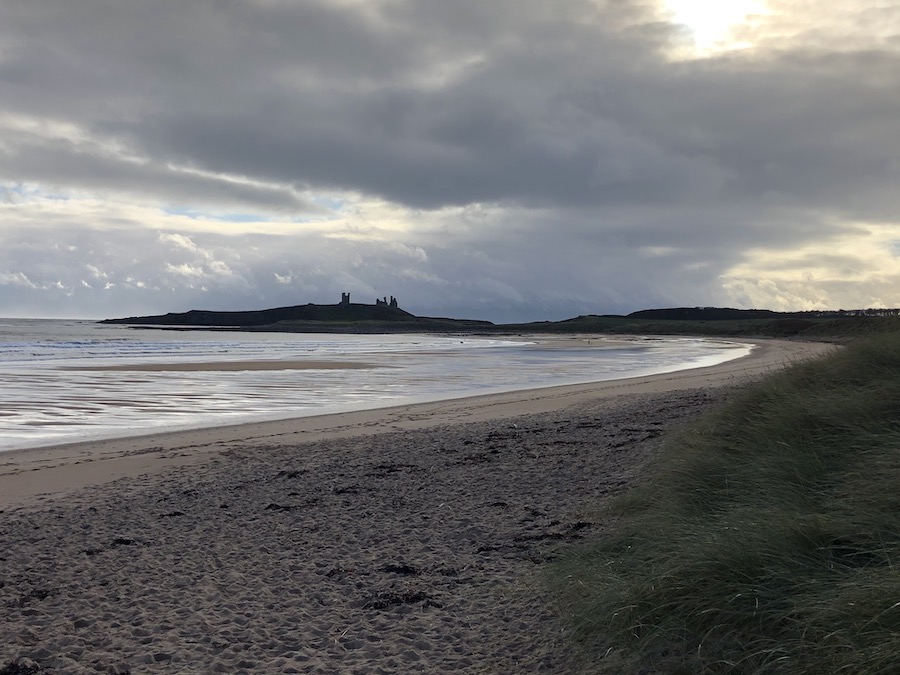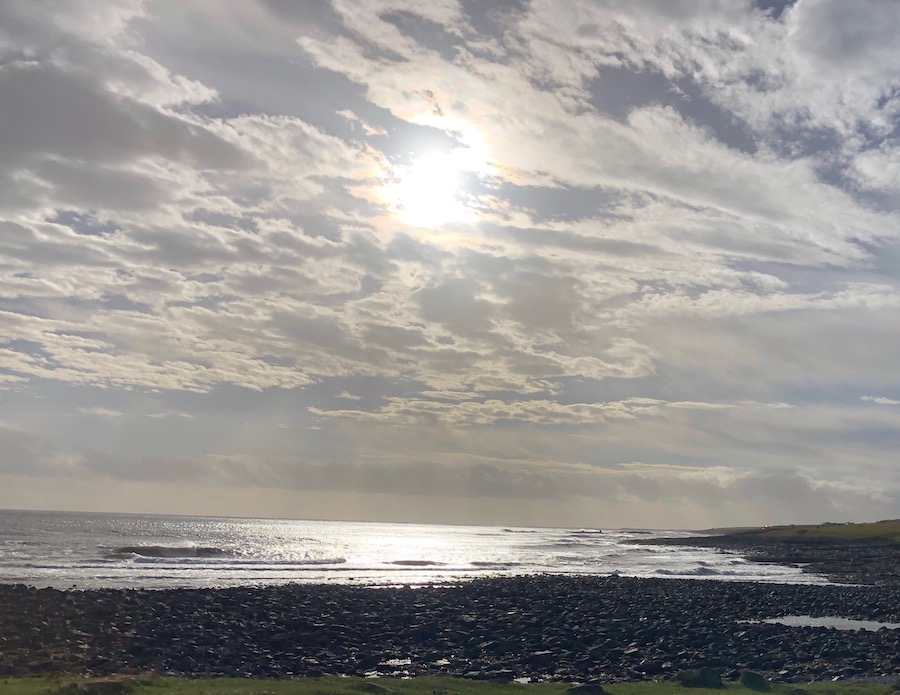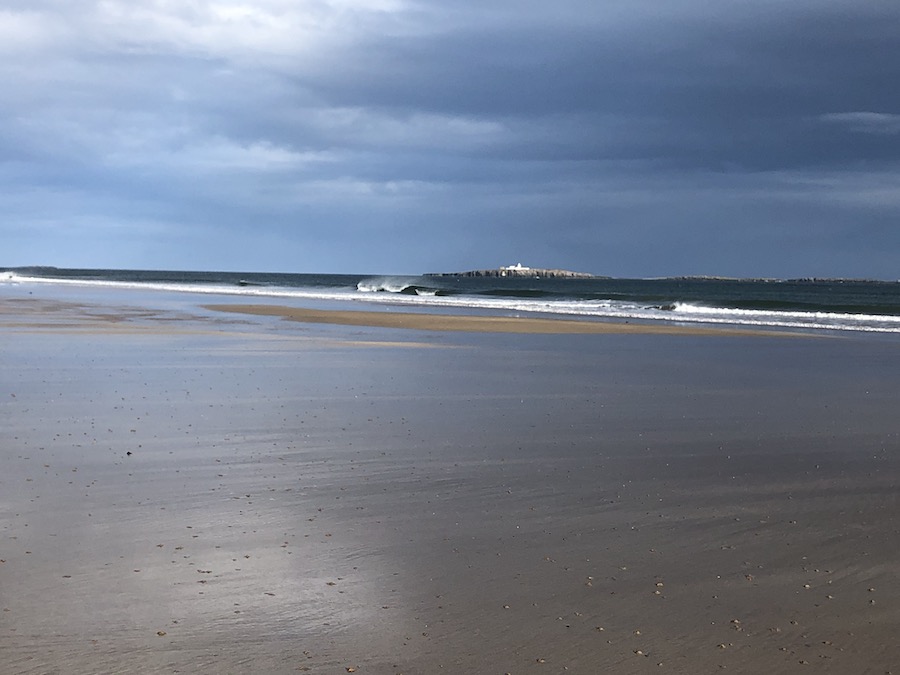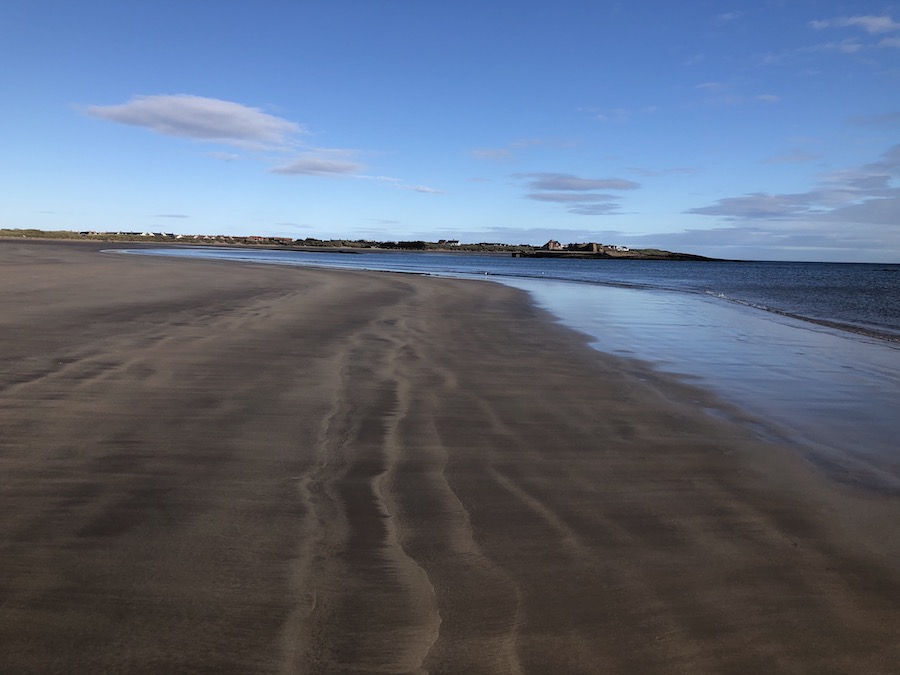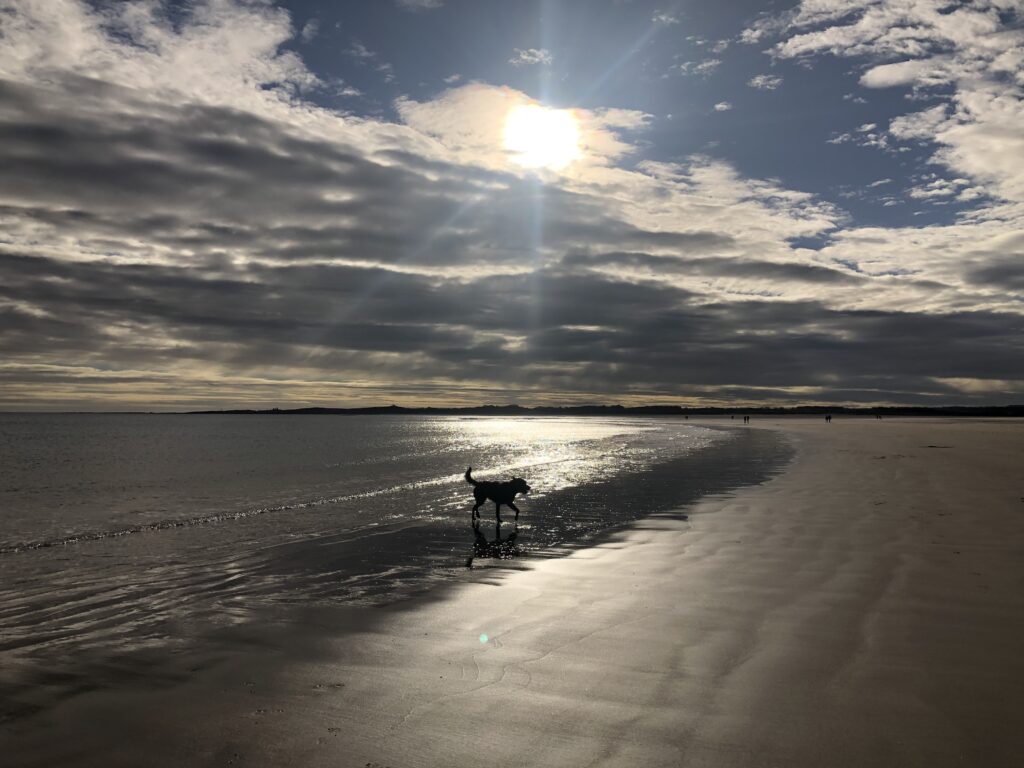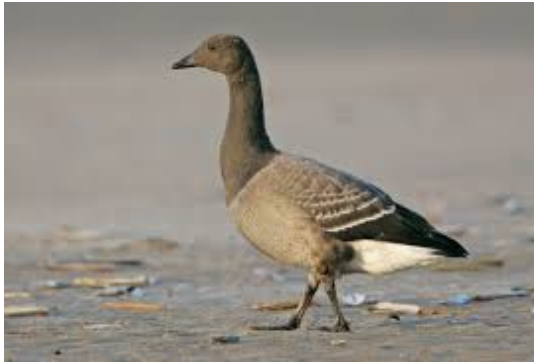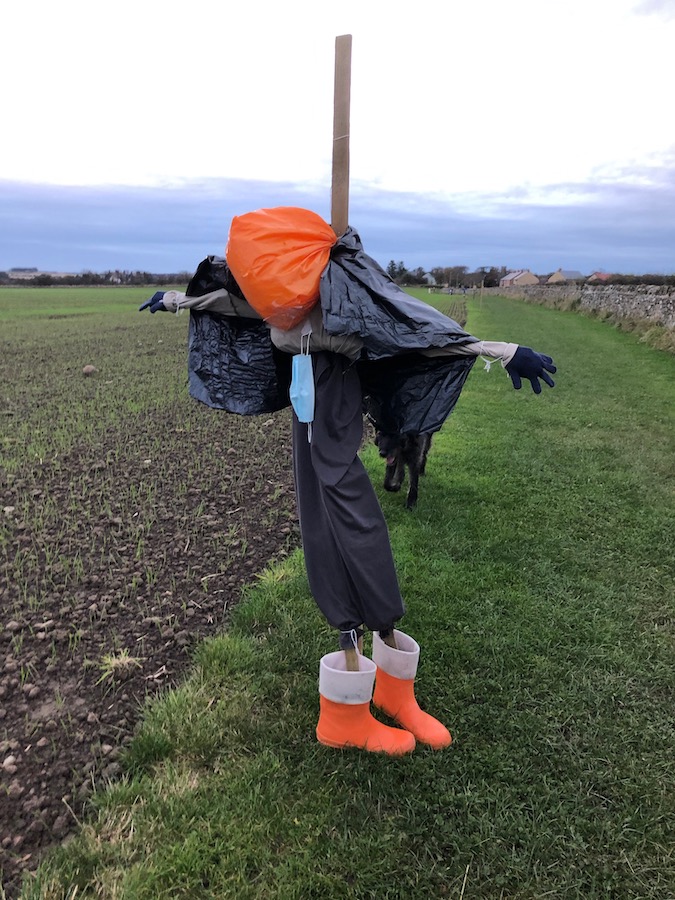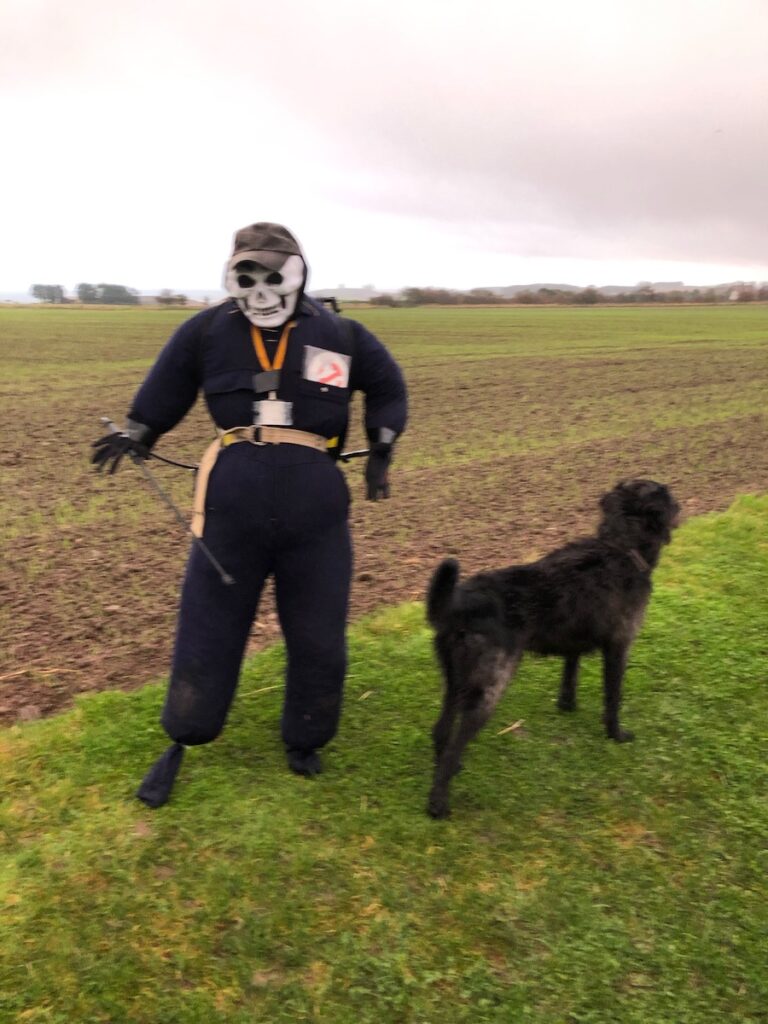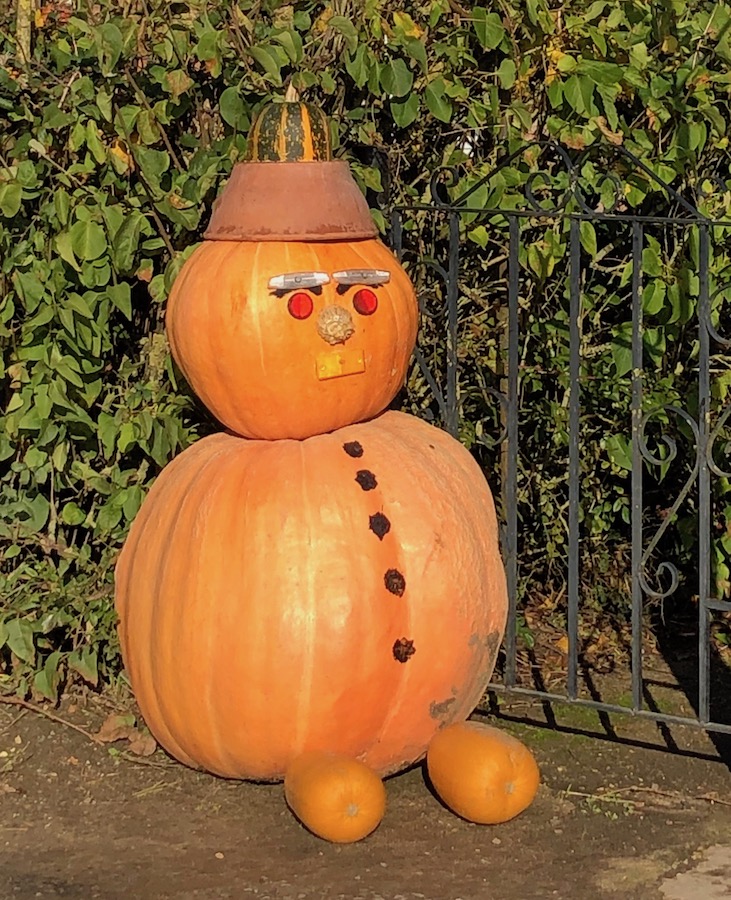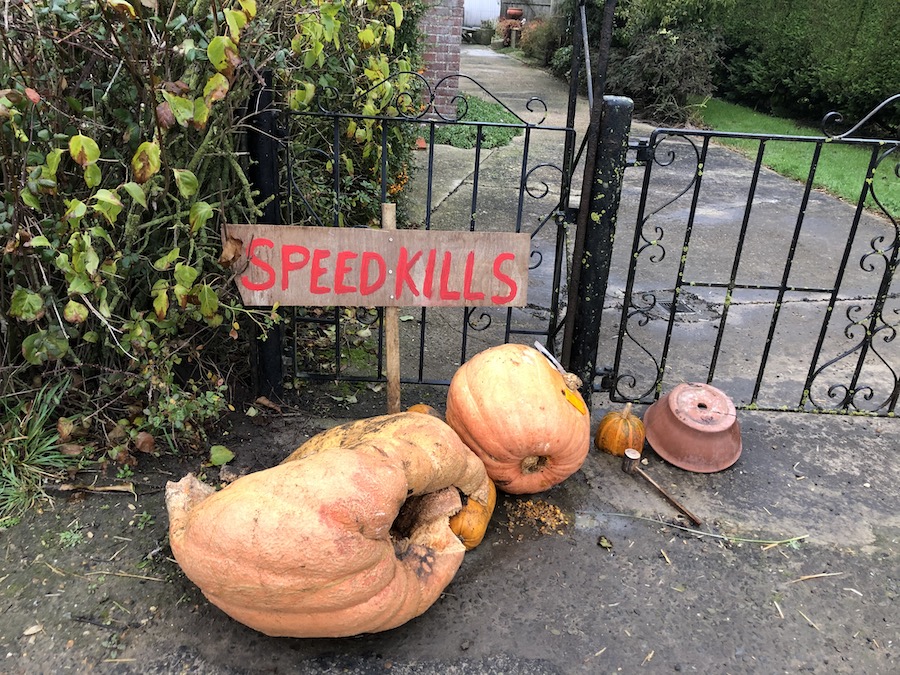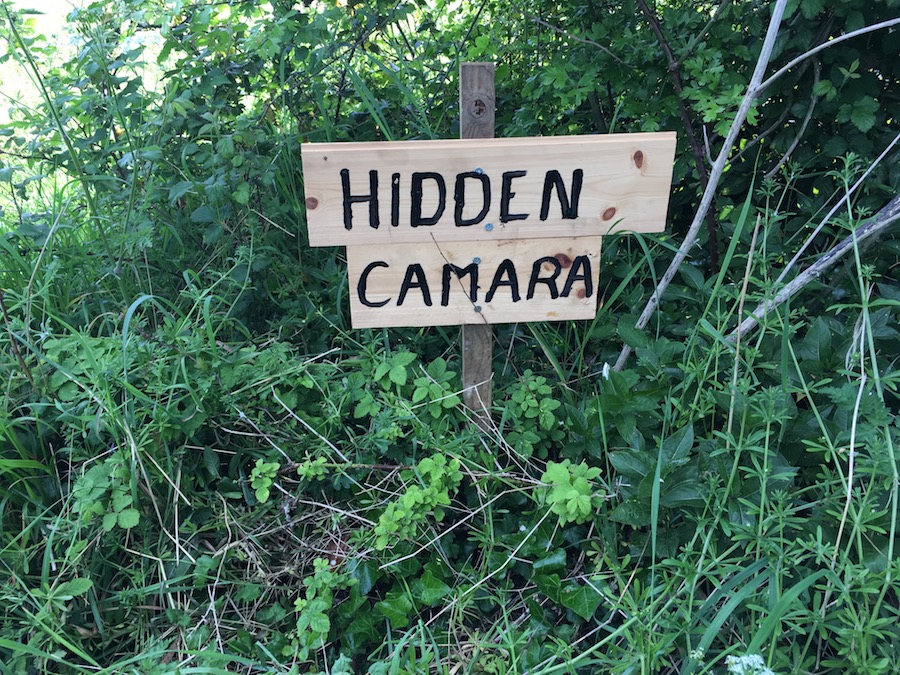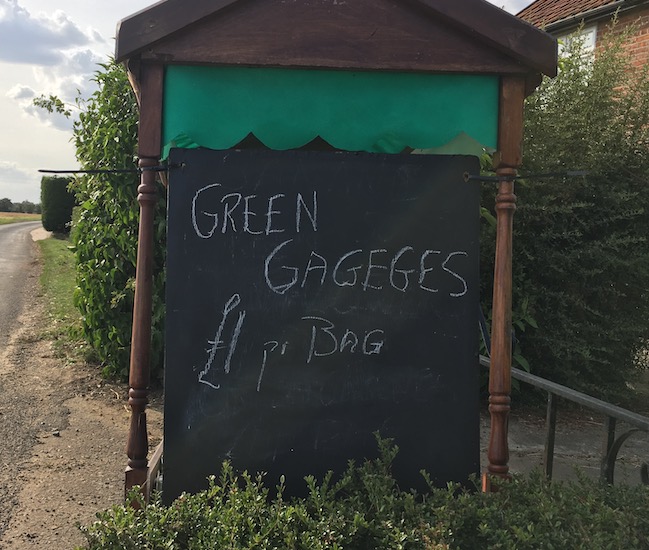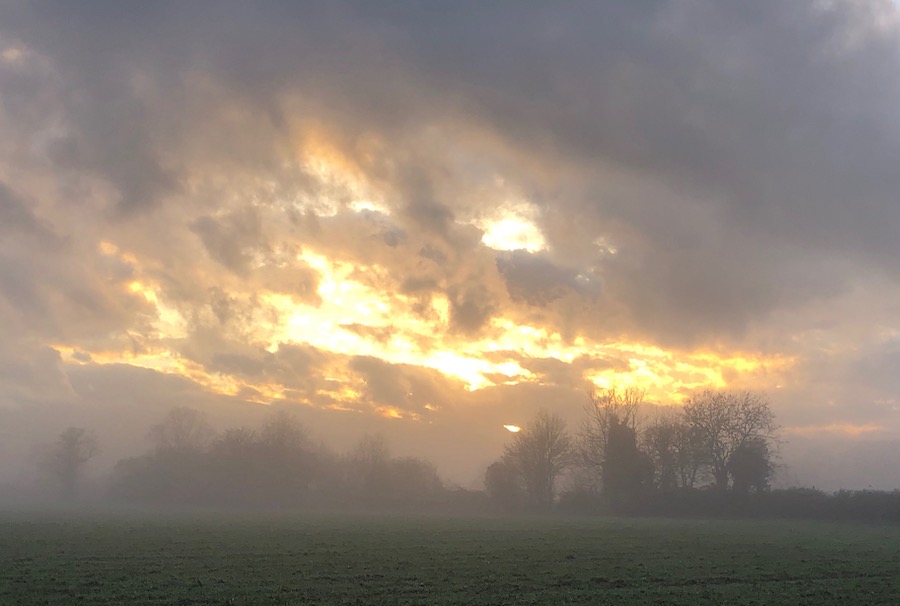
So, hands up who noticed there was no October? I’ve heard of only one so far, which suggests to me that it probably is time to stop soon.
So what happened to October? The absence was mainly because I decided to spare my readers yet another month of complaints about rain. There are only so many ways one can describe wet, and the daily drenchings that dampen the spirits, the mud that mires the mood as well as the boots and paws. The times we live in are difficult enough without inflicting this moaning on others.
Another reason was that I write these chronicles at the end of the calendar month, and at that point in October I had deserted Suffolk, its fields and woods, and my garden for a week on the Northumberland coast, a week away from work, from bills and attendant anxieties, from routine – and, as it turned out – from rain.
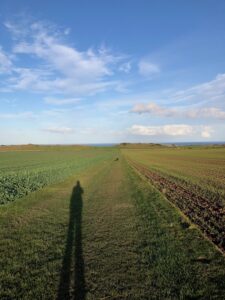
I had searched, with strict criteria, somewhere to stay: it must of course welcome my dog; it must be quiet with no noise of neighbours; and it must be within easy walking distance of those vast empty beaches of golden sand that stretch for solitary miles. And I found it – a small stone cottage, a mile from the sea, with its own track to the beach over farmland, and to the nearby village.
And so we spent a week, the dog and I, walking and walking and walking – across the expanses of sand shining silver in a low sun, over dunes and fields, to tiny fishing villages, to castles dominating the cold North Sea, proud on their promontories. And every day the sky was full of geese flying south, squadron upon squadron, their eerie creaking cry as the formations passed overhead the companion to all our walks.
The skeins were high against the sky, and it was difficult to tell what breed they were, but I think from their pattern in flight that they were Brents. Brent geese migrate in family groups, flying in wavering lines or flocking loosely together. They seldom fly in V-formation. These groups stay together from one breeding season to the next. They search for marshland, coastal grassland or farmland to rest and feed on, before pushing onwards.
These Brents breed in northern Russia and spend the winter in southern and eastern England. They nest on the boggy Arctic tundra, where the severe climate allows them only about two months of good weather in which to raise a family. By mid-September, they have left their breeding grounds, and arrive in large flocks on our shores from early October. They spend the winter feeding on eelgrass in estuaries and on crops in adjoining fields. In April they leave and head north once more – east to Siberia. They stop off along the Baltic coast before reaching the Arctic in early June, just as the snow and ice is beginning to thaw.
We probably saw pink-footed geese as well, for we were within sight of Lindisfarne, where they arrive from Iceland. Barnacle geese too can be seen in huge numbers with up to 30,000 passing through. There is something mysterious – primal – in these mass movements of birds, called by instinct, by forces within themselves to fly huge tracts of our planet, twice a year every year.
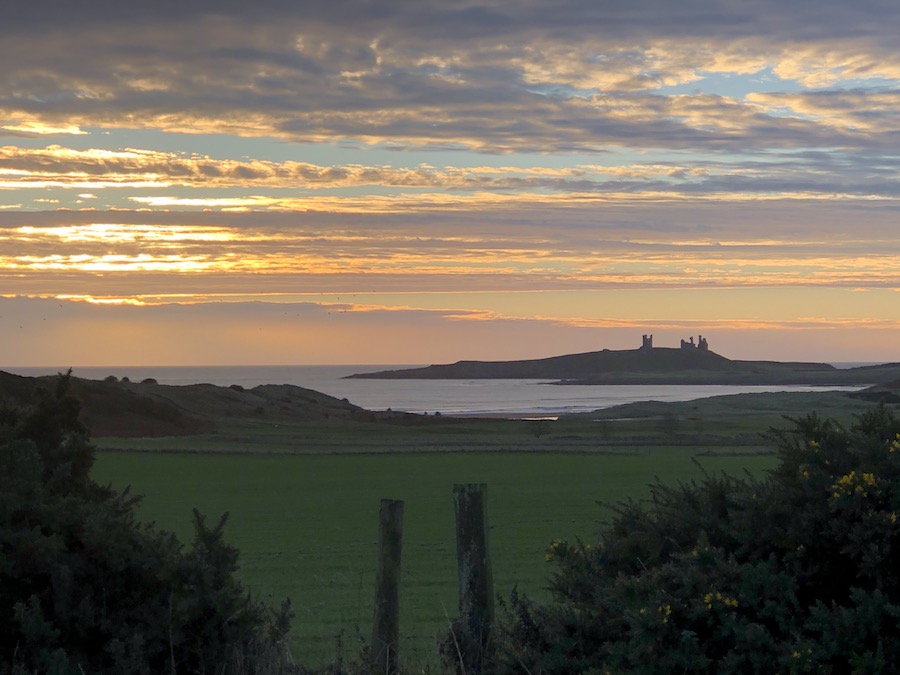
If a dog can be aware of the concept of ‘holiday’ I am sure mine was during that week. At home she has, as I frequently remind her, a pretty good life: daily long walks, freedom to gallop across fields in the dawn, a garden for interminable games of ball, food, warmth, and my abiding love which forgives all her sins. But here she is an only child, having social contact with few other dogs, and she longs for that. When I saw her bound onto the beach the first afternoon the joy was plain to see, and it was worth the 350 miles for that moment. Every day she ran, she chased whole packs of other dogs, and was chased in turn, she stole balls and obediently gave them up, she frolicked in the sea, jumping waves, rolling in the sand, racing up and down the dunes. I don’t think it is anthropomorphising to say that this was a happy dog.
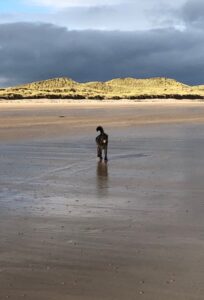
As we walked down to the village each morning we passed what must have been the results of an effort by the entire population to celebrate Hallowe’en, with 20 or so decorated grisly and ghoulish figures lining the grassy path. I offer three examples:
Our efforts in Suffolk are less scary, and more in the spirit of public service:
On our walks I often meet the elderly farmer who constructed Pumpkin Man (he who brought us “Hidden camaras” and “Greengageges”). He is the source of much local knowledge, history, and can tell stories about all the native residents of our two villages. One day in October before Hallowe’en he hailed me from afar:
Him: Do you believe in the paranormal?
I hurried towards him, and as soon as I was near enough the dialogue went like this:
Me (cautiously): Well, I think there are unexplained things…
Him: I’ll tell you what happened to me last winter.
Me (thinks): We’ll be here for a while.
Him: I was up here one morning last winter just as it was light, and I saw this man with a round head and waxy complexion. And, do you know, he was wearing little diddy swimming trunks and a white vest.
Me (politely): How strange! Did he say anything?
Him: “Rood!”
Me: Rude?
Him: Yes, He said “Rood! Where’s the rood?”
[I should interject at this point for those unacquainted with the Suffolk accent that a long ‘o’ sound is pronounced ‘oo’ and conversely an ‘oo’ sound is pronounced ‘o’, so that if one went to school in Scole, it would be said “I went to skole in skool.” When someone dies there is a fooneral.]
Me: Rood?
Him: The rood, that rood over there.
Me: Oh…the road!
Him: That’s what I said. And I shooed him where the rood was.
Me: And then what happened?
Him: He disappeared. He just disappeared. I turned round and he was gone.
I must report that on none of our matutinal excursions have I ever seen a waxy round-faced man in diddy swimming trunks, and I suspect this was either an attempt at a Hallowe’en scare, or the old chap had seen a party-goer the morning after from a nearby venue. Who knows.
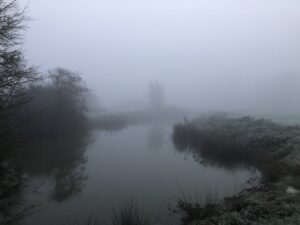
Now as I write we are coming into the true dark of the year. The days have been drear with fog, and scarce light all day. Fierce winds earlier in the month have whittled the trees bare, and their skeletal shapes loom out of the murk. We are condemned to solitude, and imprisoned alone in this darkness, in this second period of lockdown to control the virus which has ruled our lives for most of the year. And Covid Christmas forces a choice: loneliness or a potentially lethal togetherness.
We need light, any light; light from the sky, light at the end of this long, long tunnel. But it is Advent, and that points to a greater light, “And the darkness comprehended it not.” For many it will be hard to glimpse.


